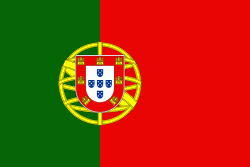São Roque do Pico (São Roque do Pico)
The municipality is bordered by the Atlantic to the north, Lajes do Pico to the south and east, and Madalena to the west.
While the first incursions into the island occurred in the 15th century, the region that would become known as São Roque occurred later. The first colonizers of Pico came to occupy the area of Lajes, coming from the lands of the north of Portugal, because there were few anchorages in other parts of the island. What occurred in the north was starkly different: these colonizers were families from Graciosa, who would much later be supplemented by Flemings from Faial, under the orders of Josse van Huerter. At this time São Roque was a peripheral jurisdiction of Lajes do Pico, and many of its religious and cultural ceremonies were centred in this municipal centre from the Convent of São Francisco.
This influence of Faial would continue for much of the island's history, becoming integrated into the Captaincy (colonial administration) of its neighbour.
The municipality was created in 1542, when its citizenry petitioned King John of Portugal to provide them administrative autonomy from Lajes. King John, therefore, carved from Lajes do Pico the territory of São Roque do Pico, while at the same time instituting the civil parishes of São Roque and Nossa Senhora da Ajuda. By granting this concession, the Álvares family promised to celebrate a mass once per week "...until the World lasted", which has been transmitted across their descendants.
The little hermitage of São Roque, and chapel of Bom Jesus, was insufficient to handle its growing populous, and it was decided in 1714 to construct the Church of São Roque, which was completed twelve years.
At the time the population was dedicated primarily to a subsistence lifestyle, with some small cultivation of grapes for the production of wine, and an active fishery. The volcanic eruptions that occurred during the 18th century turned much of the soil fertile, that resulted in the mass production of Verdelho wine, which was a popular export to America and Europe.
By the 19th century, disease infected the vineyards of the north, devastating the wine-making culture, which slowly progressed throughout the island, until the introduction of new castes. But, meanwhile, the Sãoroquenses turned to other economic sources of growth, but specifically, concentrating on the whaling in order to supplement the fishery. This culture was an important part of the municipality, resulting in the establishment of five separate factories along the coast in order support the transformation of whales into oils, perfumes and fertilizers. Even by the 20th century, the municipal seat became the home for the Fabrica das Armações Baleeiras Reunidas create in 1942, which was a union between the older companies Companhia Velha Baleeira, Lda., Armação Baleeira do Livramento, Lda. and the Armação Baleeira Atlântica, Lda. and continued to function until the 1980s. After this, the building was transformed in the post-whaling period into a museum to exhibit the artifacts for this era, including machines, implements and maquetes demonstrating the whale hunt, the peoples involved in the activity and the hardships of the local economy associated with whaling.
Map - São Roque do Pico (São Roque do Pico)
Map
Country - Portugal
 |
 |
| Flag of Portugal | |
One of the oldest countries in Europe, its territory has been continuously settled, invaded and fought over since prehistoric times. The territory was first inhabited by pre-Roman and Celtic peoples who had contact with Phoenicians, ancient Greeks and Carthaginians. It was later ruled by the Romans, followed by the invasions of Germanic peoples and the Islamic invasion by the Moors, whose rule was eventually expelled during the Reconquista. Founded first as a county of the Kingdom of León in 868, gained its independence as the Kingdom of Portugal with the Treaty of Zamora in 1143.
Currency / Language
| ISO | Currency | Symbol | Significant figures |
|---|---|---|---|
| EUR | Euro | € | 2 |
| ISO | Language |
|---|---|
| PT | Portuguese language |















